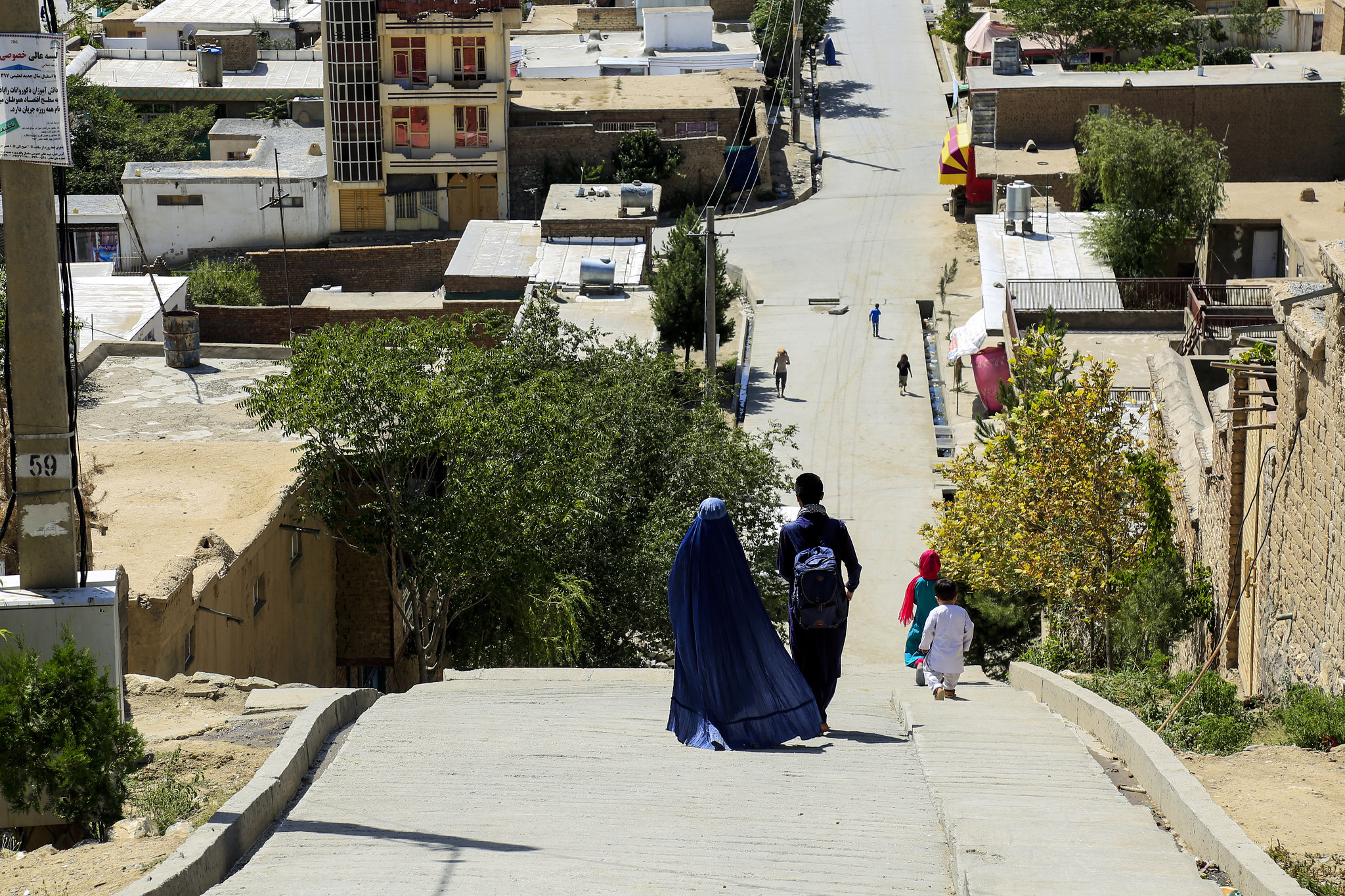
Life for residents in a Kabul City neighborhood has been greatly transformed as result of improved street conditions, including a proper drainage system. The change was brought about by the Kabul Municipal Development Program, implemented by Kabul Municipality and supported by the Afghanistan Reconstruction Trust Fund. The program, approved on March 25, 2014, aims to improve residents’ access to basic municipal services, support better service delivery, and enable early response in emergencies. It is expected to deliver benefits to over 770,000 people in a targeted area of 1,770 hectares by the close of the program on December 31, 2019.
Challenge
AFGHANISTAN’S URBAN POPULATION has grown rapidly due to an influx of returning refugees, conflict, and drought-induced migration. By 2050, the urban population is expected to be over 40 percent of total population. The relatively high urban population growth rate of 3.7 percent is higher than the national population growth rate of 2.4 percent. Kabul, already home to over half of Afghanistan’s urban population and still growing, faces significant infrastructure and service delivery deficiencies. Originally planned for less than a million people, Kabul now ranks 86th among the world’s largest cities. Its population has doubled since 2014 and was estimated to be over 4 million in 2012.
Lack of infrastructure and disproportionate population growth are reflected in the everyday lives of Kabul residents. Residents have become used to walking through unpaved streets. After every rainstorm, streets become flooded and impassible. This situation is about to be transformed by the Kabul Municipal Development Program (KMDP), which is implemented by Kabul Municipality (KM) and supported by the Afghanistan Reconstruction Trust Fund (ARTF).
Approach
THE KMDP, approved on March 25, 2014, with $110 million grant support from ARTF, will help Kabul Municipality improve infrastructure in the capital city’s crowded neighborhoods. The program’s objectives are to increase access to basic municipal services in selected residential areas of Kabul City; redesign Kabul Municipality’s Financial Management System to support better service delivery; and enable early response in the event of an eligible emergency. Equipment for the roads and sanitation departments of Kabul Municipality will combat pollution and improve service delivery as well as the city environment. The program will close on December 31, 2019.
The whole street was always either extremely dusty or covered with water and mud. But now these challenges are all solved; now we have proper roads.
—Marjan Resident, Nowabad neighborhood, Kabul City, after the reconstruction of roads close to her home
Results
KMDP HAS DELIVERED basic infrastructure services in 17 neighborhoods, covering an area of 377 hectares and benefiting 268,199 people, 73 percent of whom are women and children.
- Infrastructure: Since the start of the program on April 15, 2014, 90 kilometers of roads have been paved and over 120 km of drainage system have been constructed in the targeted area. Neighborhoods have had to make adjustments for the upgrading of infrastructure. Residential walls were adjusted in 14 cases, and 740 septic tanks and 117 other movable obstructions were removed or relocated.
- Social mobilization: Gozar Cooperative Shuras (Neighborhood Cooperative Councils) consisting of 40 men and 31 women have been established in the selected neighborhoods; more than 2,000 group meetings and over 5,900 individual meetings have been held.
- Employment: Construction has led to the creation of nearly 438,000 man-days of temporary employment.
- Communication: Monthly newsletters on the project have been published since August 2014, and distributed to KM district offices, KM departments and Gozar Cooperative Shuras.
No one was attracted to our neighborhood because of the roads. Now all our friends say that our neighborhood has clean paved streets.
— Member, Gozar Cooperative Shura, Nowabad neighborhood
Paved Streets Mark New Beginning for Kabul Neighborhood
For years, the nearly 8,000 residents of Nowabad neighbourhood, in north-western Kabul City’s Charrahi Qamber locality, lived in unpaved, muddy, dusty, and extremely narrow streets. “When we used a motorcycle or bicycle, it wasn’t possible to see all the humps and ditches in the streets,” Niamat (name changed), 45, a member of the Gozar Cooperative Shura (GCS).
Niamat says in rainy seasons even local shopping became a nightmare because of the poor road conditions. “Inevitably you would hit one of the ditches or humps and scatter all your shopping items in the dirty water.” Today, Niamat is thrilled about the new condition of the roads, and says it has changed the entire neighborhood. “Until last year, no one was attracted to our neighborhood because of the roads. Now all our friends say that our neighborhood has clean paved streets.” The change was brought about by the Kabul Municipality Development Program. The upgrading of infrastructure in Nowabad took about seven months and resulted in 20 newly asphalted, expanded streets, and an effective and hygienic water drainage system. The head of the neighborhood’s GCS, agrees that the project has been extremely successful. “We used to have lots of problems,” he states. “God bless the Kabul Municipality for taking care of us and asphalting our streets.” Winter and spring were the biggest challenges for Nowabad neighborhood residents, but as the head points out, “This year we have nothing to worry about.”
The new roads have contributed to better school attendance but students are not the only beneficiaries. Obaidullah (name changed), 24, works with a media organization and he no longer turns up at work with dirty clothes. “The whole street was either extremely dusty or covered with water and mud,” he recounts. “I felt a sense of shame before my colleagues. They stared at my dusty and muddy trouser legs. But now these challenges are solved; now we have proper roads.”
The project has turned the neighborhood around – what was previously an area to be avoided, particularly in winter and spring, has become the envy of the city.